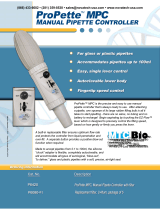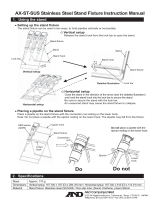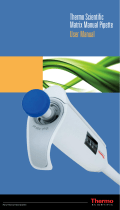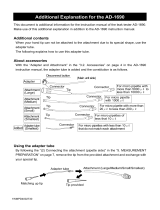
17
12 CLEANING AND DECONTAMINATION
PIPETMAN Neo is designed so that the parts normally in
contact with liquid contaminants, can easily be cleaned
and decontaminated. However, because the models P2N
and P10N contain miniaturized parts, it is best not to disas-
semble these pipettes yourself; please contact your local
Gilson authorized Service Center.
Cleaning
The pipette must be cleaned, as described below, before it is
decontaminated. Soap solution is recommended for cleaning
PIPETMAN Neo.
Single channel models - External
Remove the tip-ejector.
Wipe the tip-ejector with a soft-cloth or lint-free
tissue impregnated with soap solution.
Wipe the entire pipette with a soft-cloth or lint- free
tissue impregnated with soap solution, to remove all
dirty marks. If the pipette is very dirty, a brush with
soft plastic bristles may be used.
Wipe the entire pipette and the tip-ejector with a soft
cloth or lint-free tissue soaked with distilled water.
Refit the tip-ejector and allow the pipette to
dry.
Single channel models - Internal
The following components only can be immersed in a
cleaning solution: connecting nut, tip-ejector, tip-holder,
piston assembly, seal and O-ring.
Disassemble the pipette as described in the Chapter
11 - Maintenance.
Set aside the upper part in a clean, dry place.
Clean the individual components of the lower part of
the pipette using an ultrasonic bath (20 minutes at
You may refer to the decontamination procedure
available on the Gilson website (www. gilson.
com). Liquid must never enter the upper part
(handle) of any pipette.


























